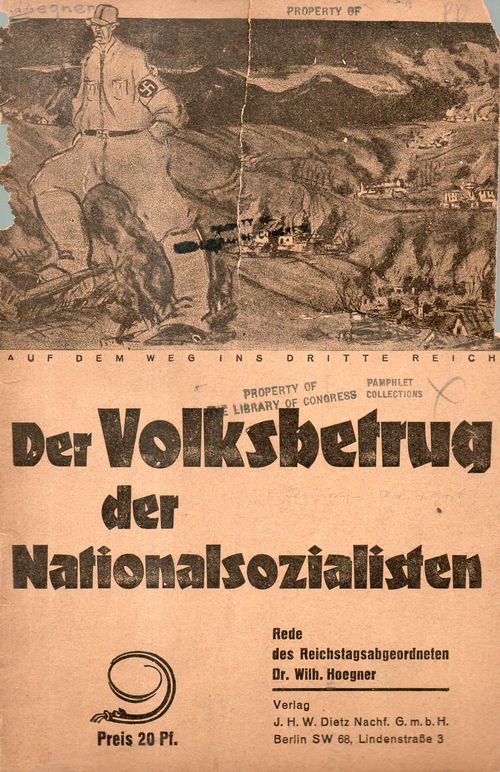JF Ptak Science Books Post 2420
[Private collection via the Library of Congress]
Wilhelm Hoegner was SPD and anti-Nazi from the earliest days of Hitler's political party. In a developing chorus of other anti-Nazi Germans, he delivered this screed against the NSDAP while he was a member of the Reichstag in 1930. Der Volksbetrug der Nationalsozialisten also features one of the most effective and tried pieces of social demonstration--artwork, and in this case a biting satire of the "progress" of the Nazi Party. The image features a hideous, rank-and-final brownshirt monster/Unmensch/Unhold, trampling his way across the land, with burning villages in his wake--the path of the Third Reich ("Auf dem Wege ins Dritte Reich"). Hoegner's sympathies are instantly seen here, and there is no chance for mistake in how he depicts Hitler's political party.
This is a very good example of social protest against the rising Verwünschung/plague that was just three years away from the total domination of the German political scene, and only 15 from total destruction. The artwork is anonymous, and it is dark, and gruesome in a very subtle and gritty--and effective--way. It is also good neighbors with other protest art/literature heroic figures like George Grosz, John Hearfield, Hannah Hoch, Kathe Kollwitz, Otto Dix, and many others. There just weren't enough of them. Or their followers.
Hoegner would last in Germany only another three or so years, but survivied--his surrepticiously published account of the Beer All Putsch (published in 1933) was a major inconvenience to the Nazis, though that was settled out once Hitler came to power in 1933 and as many copies of Hoegner's work were found and destroyed. Hoegner himself made it out to Austria and then to Switzerlqand by 1934. He would return to Germany immediately after the war and assume advanced political office in the new Germany.
Full rext here http://library.fes.de/library/netzquelle/rechtsextremismus/pdf/hoegner.pdf



Comments